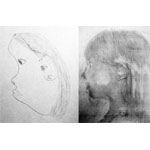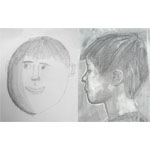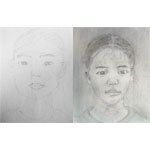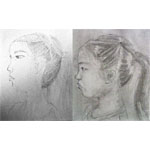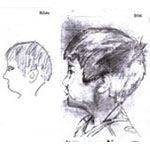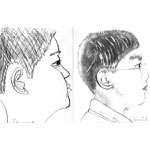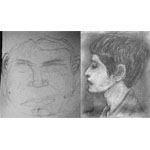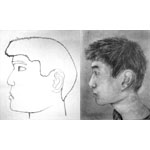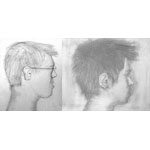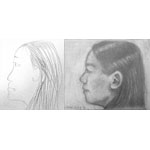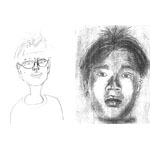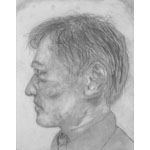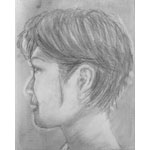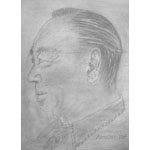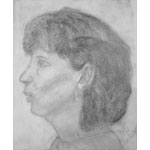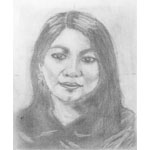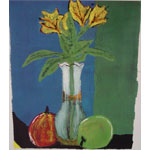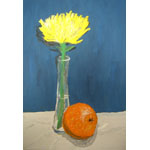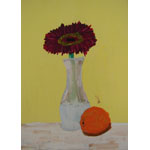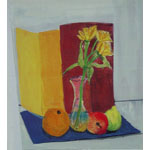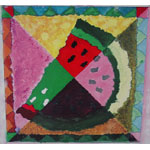Drawing on the Right Side of the Brain |
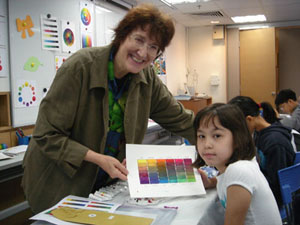
Workshops that Enhance Creativity and Artistic Confidence
Dr. Betty Edwards' book "Drawing on the Right Side of the Brain" is the most widely used and highly praised drawing instruction book in the world. It has been on the New York Times best seller list twice and has sold more than 3 million copies and translated into more than 15 languages. Her book "Color - a course in mastering the art of mixing colors" was published in 2004 and is already being used as a comprehensive reference for the subject.
Dr. Edwards' drawing workshops has successfully taught thousands to master the art of drawing using her approach. While the focus of the workshops is on drawing, no previous art training or special talent for drawing is necessary.
What is the difference between these workshops and other drawing classes?
Dr. Edwards applied decades of brain-research findings to the development of her five basic perceptual skills needed to learn how to draw. She believes that without these skills, it is very difficult to draw from memory or from an imagined image, even for a trained artist. Anyone who wants to learn to draw, and who will try, can do so in a short period of time. Like all other skills, with practice, the skill can be perfected.
Her methods have been demonstrated and the results have been dramatic!
Why is learning to draw so important?
To quote Dr. Betty Edwards:
"Just as we teach our children their ABC's so that they can read and write; and as we teach them their numbers so that they can compute and calculate; so too, must we teach them the non-verbal, non numerical skills of visual perception. Without that, we are robbing our children of the use of important brain functions. With perceptual skills training, students are far better able to concentrate, to learn, to grasp abstract concepts and ideas, and to see and appreciate the world around them. Learning to draw is an efficient means for tapping into latent observational skills."
Teachers have reported that they have discovered definite links between drawing instruction and other areas of study. For example, the skill of "sighting" proportions is linked to fractions and ratios. Learning to see and draw lights and shadows is linked to setting and mood in literature. Science teachers report that children are better able to observe detail and relationships and express more interest in science and art.
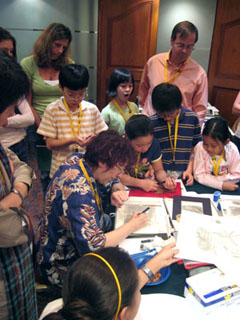
The Workshops
The Beginner Workshop (suitable for ages 8 to adult)
This 15-hour workshop is designed for everyone, from students who can't even draw a stick figure to professional artists. Anyone can learn to draw once they learn and practice the five perceptual skills to drawing.
- Perception of Edges
- Perception of Space
- Perception of Angles and Proportions
- Perception of Lights and Shadows
- Perception of the Whole (integration of the above skills).
The instructor, Kristin Newton will engage students in step-by-step demonstrations of each important skill. Students will then be given fun and challenging exercises designed to access the right brain and practice each step until they finish with their own self-portrait on the last day.
The Color Perceptions Workshop (suitable for ages 11 to adult)
This 15-hour practical workshop is designed for students who have already taken the Drawing on the Right Side of the Brain - Beginner Workshop. In the Beginner workshop students learned how to draw by really SEEING those lines, angles and shapes, now they'll be able to recreate the world in color! Hands on exercises and brief talks will focus on how to use the basic theory of color to achieve harmonious color and how to see and efficiently mix specific desired hues and intensity.
I learned what negative space was, how the right brain is like, how to draw better pictures and lots more... (C.Yeung, 11)
I like how I made new friends and I like how they encouraged you! (I. Ho, 11)
I like how relax and calm the atmosphere is. (E. Ho, 11)
I liked all of the activities. They were fascinating. (J. Luo, 11)
I liked the techniques. (J. Lam, 11)
I like the things that I learnt and the workshop prepared all the things we need to use. (Y. Choi, 11)
The upside down drawing and how they explain how the artists use the tools. (V.Tong, 11)
It was extremely fun and I think any person (no matter their ability) should take part in it because you can really improve your drawing skills! (L. Luk ‘09)
How easy and useful and interesting it was. (R. Marqueses ‘09)
How it was fun and I was learning at the same time, such as shading and printing. (K. Luk ‘09)
I’ve learned a lot of useful drawing techniques that will help me throughout my GCSE and IBCSE, and hopefully I can apply these techniques I’ve learnt in IB and throughout my future. (K. Hwang ’09)
Kristin’s relaxed attitude. (S. Lee ‘09)
I liked how you made it fun and interesting and learnt at the same time. (M. Liu ‘09)
A few simple techniques can make a lot of difference. Wonderful experience. (M. Chearavanont ‘05)
I learnt a lot of useful ‘tricks’ which will definitely come in handy when drawing in the future. I really felt that the things that I learnt were concrete skills that I will remember. I felt it was time really well spent and learnt a lot in a very short period of time. (C. Lu ’05)
Learned not to be afraid of drawing. Logical daily progression – eased our brains into thinking about drawing. Teaching us how to look at things differently. (L. Fok ’05)
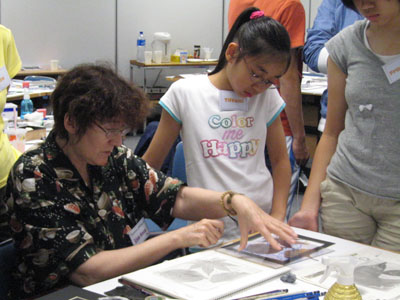
The Instructor
Kristin was born in Santa Monica, California. She apprenticed for 5 years at the stained glass studio of Roger Darricarre while working on her B.A. in Fine Arts from University of California, Northridge. She was first invited to Japan on an artist's exchange program for one year. After that, she worked with the Mayfair Stained Glass Studio, the largest in Japan, and taught design at The Stained Glass Professional School. During this period she completed many stained glass commissions in Japan, Hong Kong, and the United States for banks, hotels, public buildings, and private residences.
In 1987, Kristin met two mentors who that changed her life - Dr. Betty Edwards, author of "Drawing on the Right Side of the Brain", a ground-breaking book that rocked the art world”, and Dr. Georgi Lozanov, the "father of accelerated learning", who by using the untapped reserve capacities of the brain, developed a method to learn three to five times faster while increasing psycho-physiological well-being. Kristin is certified by both Dr. Lozanov and Dr. Edwards and combines their techniques in her unique 5- day Right Brain workshops.
Kristin assisted in organizing Dr. Edwards’ first workshop in Japan in 1990. In 1995 Kristin received the Drawing on the Right Side of the Brain Teacher Training Certificate. By 1997 she was also certified to teach the Right Brain Color Workshop. From 2000 to 2009, Kristin had an art school in Tokyo dedicated to the “right brain” way of learning, focusing on using creativity as a bridge to unleash the inner artist in everyone. These days Kristin works closely with companies to develop creativity seminars around their particular needs. She has been sharing her vision of art and creativity throughout the world for over 25 years.

